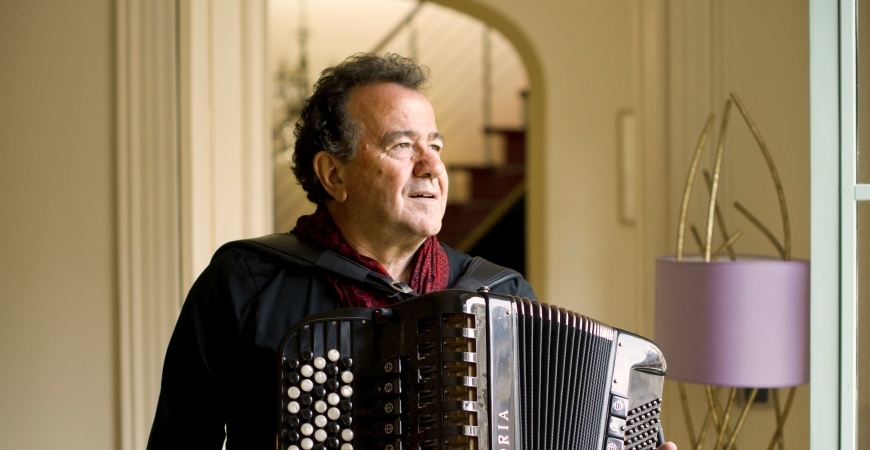Jazz, chansons, classics
Although the accordion tends to make only cameo-like appearances in jazz and classical music, both genres feel fully at home on the chosen instrument of Frenchman Richard Galliano.
The dance music that had gained huge popularity by the mid-20th century, started off in Parisian cafés and bars in the 1880s as a form of entertainment for the poorer social classes. Chanteuse Édith Piaf, as well as film actor and singer Jean Gabin, played a role in popularization of the style, and accordionists – the predecessors of Galliano – also made their appearances, musicians such as Italian-born Tony Muréna and the Belgian-French artist Gus Viseur. Galliano not only continues and refreshes this tradition, but he also applies the art of Brazilian (Sivuca, Dominguinhos) and Italian (Luciano Fancelli) accordion players to early jazz accordionist styles (Joe Mooney, Art van Damme). His album New Musette (1991) caused a big stir; on it appears a more complicated jazz-like rhythm and harmony, enriched by refined tonal use.

Composer Astor Piazzolla personally encouraged the accordion player, nearly 30 years his junior, to go back to French traditions in order to innovate the accordion repertoire, just as the Argentinian had done when fashioning nuevo tango in the Fifties. Photo: Jean-Beptiste Millot
After accordion and music theory studies, Galliano came across jazz at the age of 14 through the recordings of trumpeter Clifford Brown, who died tragically young in a car crash. In 1973 he moved from the South of France to Paris, where for a time he played in jazz singer Claude Nougaro’s formation. In 2010 he was contracted by the prestigious Deutsche Grammophon, following which a whole series of classical music discs were released (Bach, Vivaldi, Mozart), although naturally his repertoire also includes the French composers Debussy, Ravel and Satie.
Galliano has made music in a wide variety of formations and bands, and he is more than happy trying out unconventional instrumental line-ups. He has no problem taking to the stage with a string orchestra or a big band, and he regularly performs solo, too. He has jammed with the best of French revue and cabaret, not to mention European and American jazz. In Paris he worked with chanson singers Charles Aznavour and Juliette Gréco. He has appeared with jazz trumpeter Chet Baker; Belgian-American Toots Thielemans, known for his mouth harmonica play and whistling technique; vibraphonist Gary Burton, the fusion jazz pioneer; and Jan Garbarek, the Norwegian jazz saxophonist, who also holds an interest in classical music. A duo album with Ron Carter, the world-famous double bassist, was released under the title Panamanhattan in 1990. Galliano returns to Budapest and the stage of the Sir Georg Solti Chamber Hall at the end of October in the company of Mihály Demeniv, the young accordion player discovered by the Hungarian talent show Virtuosos.
Péter Merényi


